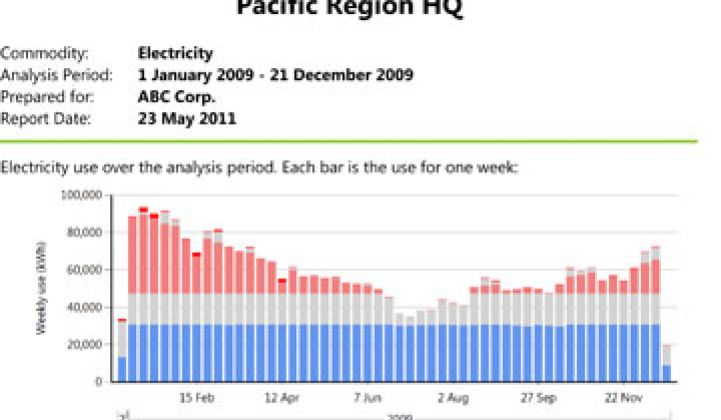The White House’s Green Button initiative has garnered a lot of interest in just a few short months. Utilities that collectively have more than 30 million customers have signed up to support the data sharing tool.
The button, which easily delivers interval data from smart meters, can be leveraged by any group of utility customers. But there is one class that might benefit most of all: the small and medium commercial sector.
Too small for a full building management system or energy manager, but with more significant savings potential than an individual home, small and medium businesses and buildings are the hardest nut to crack when it comes to energy efficiency. But with Green Button apps, business owners who are strapped for time and money can get more insight into their energy use and then take actions -- many of which don’t cost anything -- to reduce their energy bills.
The advent of the Green Button makes it easier for new companies to deliver cheap, actionable information to businesses of every size. Melon Power, which launched last month, is one of the first companies that is solely focusing on using the Green Button to help businesses comply with energy benchmarking codes that are sprouting up nationwide.
“What’s cool about the Green Button is you can build something that has scale,” said Craig Isakow, founder of Melon Power.
Isakow, who has worked for the U.S. Department of Energy and Johnson Controls, is interested in how to provide information at very low cost. While energy service firms might be able to do an audit and benchmark for $1,500, Melon Power expects to do it for $500, or maybe less once the company scales. Melon Power takes a building’s energy information in Green Button or another format and puts that through its software, sends it to the EPA to get an Energy Star score, and then delivers that to the client.
“We want to create the Turbo Tax of energy benchmarking,” said Isakow. “Once we have that relationship, we might be able to sell other analytics.”
For EnergyAi, which sells $20 reports, engaging business owners with their energy use in meaningful ways is its only mission right now.
“My real goal is to make EnergyAi as affordable as possible,” said Dave Krinkel, founder of the company, whose last position was in enterprise energy management for Itron. He is not looking to compete with full-service energy service companies, but rather to be a tool for them to interface with customers.
After all, the average business owner doesn’t have time to crunch their own data off of a utility website. Many aren’t even interested in benchmarking unless it’s mandated. However, with EnergyAi’s reports, owners can see where there are red flags -- such as high usage during off-hours or on random days -- and then make adjustments. “It can show you the smoking gun,” said Krinkel, “but it can’t tell you who pulled the trigger.”
But most clients know the culprit of the energy use, and often they take action to fix it. For some businesses, it’s as simple as showing them in dollar figures what leaving unnecessary equipment on is costing them. Krinkel said he produced a report for a municipal garage with a load that looked more like a data center. The reason was fans that were running constantly and could easily be shut down.
“The challenge is providing them with something useful,” said Krinkel. For both Melon Power and EnergyAi, the focus is not pushing customers toward deep retrofits. Instead, it’s just understanding where the dollars are going in the first place and cutting down on absolute waste.
Other companies that support Green Button for smaller properties include FirstFuel and Retroficiency. Like EnergyAi, Retroficiency also provides its platform to ESCOs, but rather than just taking the first step, Retroficiency goes much further to find the best candidates for retrofits.
Similarly, FirstFuel leverages utility data -- including in Green Button format -- along with other data to remotely provide a consumption pattern of a building and then show building owners where to focus to increase efficiency and cut costs.
As more utilities go from commitments to support Green Button to activating it, it will only expand the ways companies can leverage it. While EnergyAi and Melon Power are still testing and tweaking their software, they each see an expansion into monitoring or add-on services. Later this year, the Green Button will allow customers to let third-party providers to get their directly data from a utility, whereas now they have to download it themselves and then send it to the third-party provider.
“You can tell the person who pays the electricity bill interesting stuff on an ongoing basis,” said Krinkel, who has been in the energy management space for 25 years. “I am so pleased and excited about the Green Button.”



